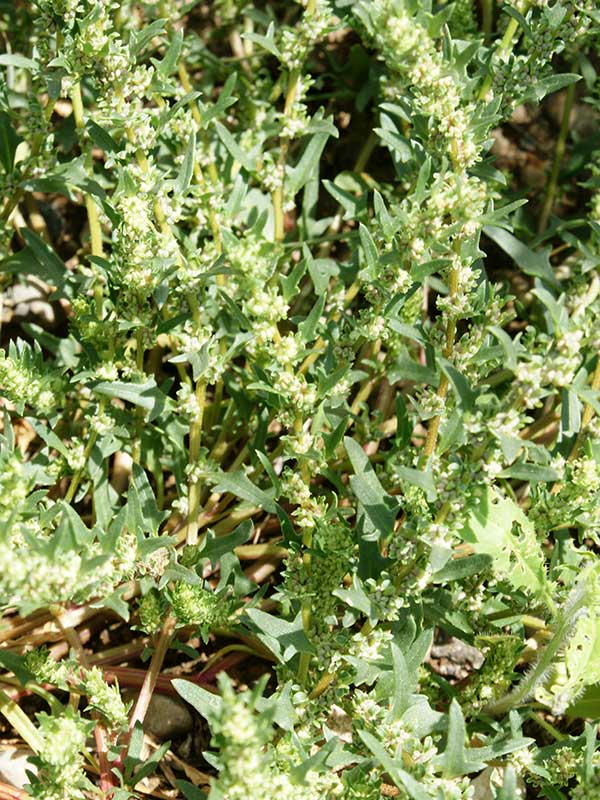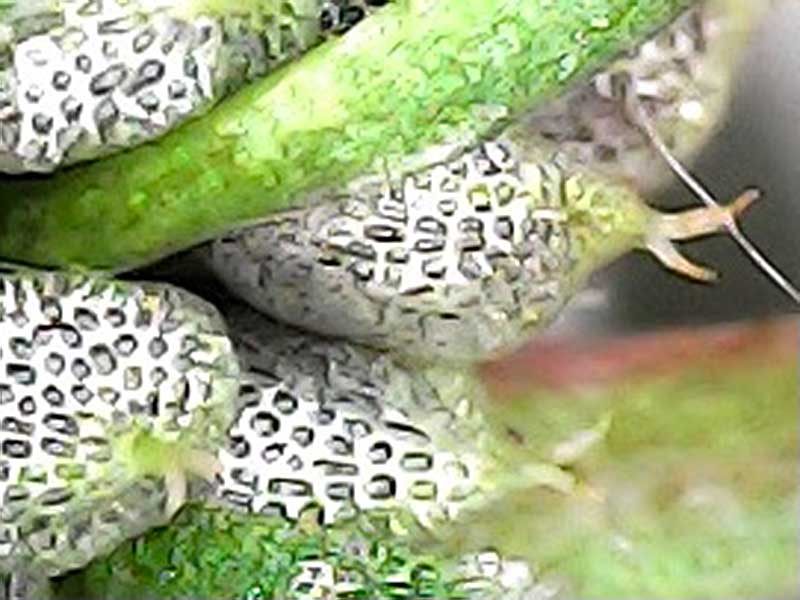Blitum nuttallianum / Nuttall’s povertyweed
- ugly little creeping plant from a central stem
- arrow-shaped leaves with two prominent lobes, especially on lower leaves
- teeny clusters of teeny greenish flowers; no petals; in most leaf axils
- widespread, but usually exposed and weed-like
Also known as: povertyweed
Synonym: Monolepis nuttalliana, Chenopodium arcticum
Note: should you wish to google this, there are far more hits with Monolepis nuttalliana than with Blitum nuttallianum, so the name change must be fairly recent.
See also two other prostrate possibilities: Oxybasis glauca / oak-leaved goosefoot, Polyganum aviculare / prostrate knotweed
Nuttall’s povertyweed, or just povertyweed, is a fleshy/succulent annual herb freely branching from the base. It can be either prostrate (flat to the ground) or ascending. The stems are up to a foot long/tall, and red or green, and hairless.
Povertyweed leaves are alternate, ½ to 2½ inches long, up to about ½ inch wide. Plants I’ve seen in the Valley tend to the smaller end of this. The leaves are triangular to arrowhead-shaped, with a notable pair of pointed lobes on the lower leaves. The lobes are closer to the base than the apex of the leaf. Sometimes, there can be another couple of smaller lobes toward the tip. The upper (or more distal) leaves tend not to have the lobes.
The flowers of poverty weed are teeny and occur in packed, round clusters. They sit tight in the leaf axils and there are lots of them, e.g. a cluster for each leaf. The flowers are either pistillate (female parts only) or perfect (both male and female parts). None of the flowers have petals, and what you mostly see is the round, green ovary. The style, should you have really good eyes, a hand lens or a microscope, are 2-parted at the tip; see the gallery for a photo. Perfect flowers usually have one stamen, but sometimes two. Young flowers are “white-mealy”, meaning they are covered with oil-filled glands. See the gallery photo.
The fruits are also very small, and technically, nuts. There are a lot of them and if you have, say, one good sized plant in your garden, by October, you’ll have a bazillion seedlings.
Povertyweed is found in many habitats, including disturbed areas. It is said to favor wet places, but I’ve seen it in many that are far from that. The leaves and young roots are both edible if cooked. This is a common feature of the family and especially of the chenopods. Ask your mother or someone who actually knows.
| Color | |
|---|---|
| Family | |
| Blossom size | |
| Inflorescence size | |
| Inflorescence type | |
| When? | |
| Where? |


